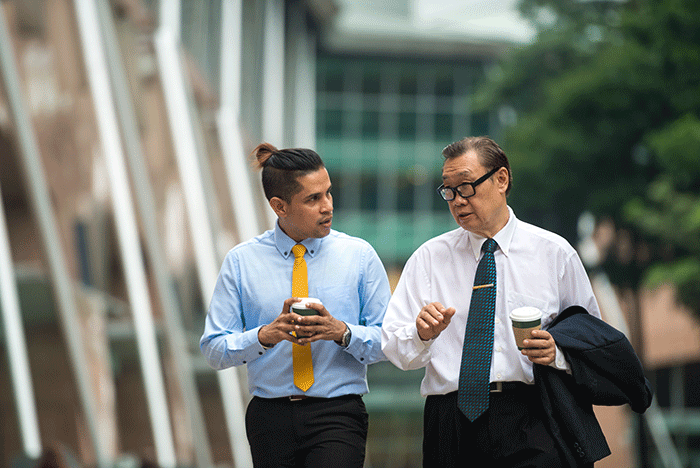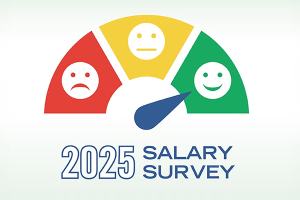How critical thinking saves our lives

Image from Getty Images
Some say it was the long walks around the Dhoon estate in Barton Mills village, Alexander Fleming’s family estate in Suffolk, England, that led to his discovery. But that gives more credit to southeast England’s landscape than to the landscape within Fleming’s brain.
It was Fleming's own curious and critical mind that led him to London’s St. Mary’s Hospital to study medicine. It was Fleming’s own intelligence and interest that drove his focus on the microbes that caused diseases like tetanus and his search for tools to combat their toll on the human body. As Kholhring Lalchhandama noted in his 2020 Science Vision article, “Reappraising Fleming’s snot and mould” Alexander Fleming “had all the dispositions to be a notable man.”
Fleming’s trip to Barton Mills did have a monumental impact on his and every other human being’s life. Knowing he was going to be away from his lab for an extended period, Fleming moved some of the culture plates he used to study staphylococcus growth so that they would be out of direct sunlight and to make room for a colleague who would be working in the lab during his absence.
When Fleming returned on Sept. 3, 1928, he discovered that one culture plate had a blob of mold around it and no staphylococcus growth. Many of his colleagues told him this wasn’t anything of note, but Fleming didn’t take those assumptions to heart and crucially began to shift his experiments to understand what made this mold such a powerful agent to stop microbial growth. That Sept. 3, almost 100 years ago, was the day when Fleming’s critical thinking started the world on its path to penicillin and other antibiotics.
It wasn’t Fleming’s critical thinking alone that would save countless lives, but rather a team of individuals that engaged with the world with an eager spirit. In 1937, Australian pharmacologist and pathologist Howard Florey’s and British biochemist Ernst Chain’s critical thinking helped them discover Fleming’s research and assisted in their work toward a means to mass produce the penicillin he discovered a decade previously.
It was the critical thinking of Ruth Callow, Claire Inayat, Betty Cooke, Peggy Gardner, Megan Lancaster and Patricia McKegney, who were recruited by Florey to “farm” penicillin, that helped them develop and maintain the fermenting broth where the penicillin grew deep in the basements of Oxford University. The fruits of all those people’s critical thinking then traveled across the pond, where Florey and Chain collaborated with critically thinking American scientists in Peoria, Ill., to mass produce penicillin in support of the Allies’ war effort and soon the entire world.
Multiple years. Multiple people. Multiple continents. Multiple disciplines. The same power skill that led to one of the most important pharmaceutical innovations in the 21st century: critical thinking.
Innovation and critical thinking
Great ideas, great insights — these are the seeds of innovation. Concentrated value married with untapped potential. But the Parable of the Sower teaches us that a seed can only grow when it lands on fertile soil. Critical thinking is the soil from which great innovations grow. Fertile soil, at a minimum, must have nitrogen, phosphorus and potassium for plants to grow. For plants to flourish, many other nutrients and substructures must be in place.
Innovation works the same way. For a great idea to be nurtured into a great innovation, it needs to be examined for gaps, tested for resiliency, and teased apart to understand the processes required to prototype and scale it, whether it is a product, process or paradigm-shifting conceptual framework. Good ideas not processed through critical thinking will end up like seeds stolen by sparrows or scorched by the sun after settling on stony, shallow soil. So, what are the nutrients that make up effective critical thinking?
As I referenced in my April 2023 article on critical thinking, Peter Facione, Ph.D., CEO of Measured Reasons LLC and author of the paper “Critical Thinking: A Statement of Expert Consensus for Purposes of Educational Assessment and Instruction,” highlights some key characteristics of critical thinkers. The expert panel he consulted in his research described critical thinkers as those who approach problems with:
- Clarity in stating the question or concern.
- Orderliness in working with complexity.
- Diligence in seeking relevant information.
- Reasonableness in selecting and applying criteria.
- Care in focusing attention on the concern at hand.
- Persistence though difficulties are encountered.
- Precision to the degree permitted by the subject and the circumstances.
A white paper from Pearson TalentLens describes three essential elements of critical thinking:
- Recognizing assumptions. This involves separating fact from opinion. Too often, we accept unsupported information as accurate because it reinforces our own beliefs and because the speaker is particularly credible. Many innovations fail because companies assume that their ideas will instantly be embraced by the public — ignoring warning signs that might suggest otherwise.
- Evaluating information. This involves stepping back and objectively sorting through different positions. Another reason innovations fail is that people often let emotions — their own or others’ — color their decisions. Or people may go along with someone else’s position to avoid conflict. It is essential to systematically review and evaluate information in an unbiased manner.
- Drawing conclusions. This involves bringing diverse information together to arrive at conclusions that logically follow the evidence. Innovations will have a greater chance of success when people do not generalize beyond the evidence at hand and are willing to change their positions as the evidence changes.
Creating a critical thinking culture
If great ideas grow like plants into great innovations, then great organizations are skilled gardeners, thinking critically about the environment of the whole garden to which they are tending. How do you give space for each plant to get equal access to the sunshine and the rain? What do you need to remove from the garden and introduce for the whole environment to yield results? How do you build teams of critical thinkers, all with unique perspectives who view the idea from different angles? How do you layer critical thinkers together so that one person’s biases are overcome by another person’s receptivity? How do you build a team culture that gives its members the trust with one another to openly question an idea with the security that they share the goal of reaching the optimal solution, not the zero-sum winner of the argument?
Building a critical thinking team culture takes time, incremental actions of observable trust creation and a willingness on everyone’s part to participate as well as confront their own comfort by admitting when they are wrong. But building the planter’s box of a critical thinking team culture will pay off with a cornucopia of success in the long run.
When it comes to critical thinking, encouraging your entire team to strengthen their critical thinking skills will allow your team and organization to spot trends more quickly, whether in the marketplace or the built environment for which they are responsible to optimize for patient safety. A team of critical thinkers will help to spot problems in projects and experiment with alternative approaches to continue down the critical path to completion.
Facione, our critical thinking master gardener, provides 10 questions that team leaders can integrate and model for their teams to develop strong critical thinking skills. He recommends using the following when analyzing problems, new ideas and potential life-altering discoveries standing out like mold on a petri dish:
- How is this situation like the prior situations?
- How is this situation NOT like prior situations?
- What happens if we take this element out of the equation?
- What happens if we insert this factor into the equation?
- What exactly is the problem, and is it changing over time?
- How can we adjust and adapt to those changes?
- Why are our standard approaches consistently failing?
- How can we seize the advantage?
- Why are our people over-simplifying the complexity confronting us?
- Am I, are we, missing anything that opposition leaders are seeing?
Like the seed of great ideas, the seed of critical thinking can be found in the core of all of us. We spent most of our early years thinking critically about how the world works? How do I get food? How do I get from the place I am to the place I want to be? How many times can I drop this thing right after an adult has picked it up for me before they seemingly lose their mind and move on to other things?
It is the mark of all great innovators to think critically about their experiments, as Thomas Edison is quoted as saying, “I have not failed. I’ve just found 10,000 ways that won’t work.” Whether you and your team are working on the next lightbulb, building a new behavioral health center or optimizing your approach to exit sign inspections, make sure you are able and willing to dig through the sediment of unexamined indifference we layer upon the seeds of our curiosity to help innovation grow around us. The bounty is plentiful and self-sustaining when we do.
Adam Bazer, MPD, is senior director of knowledge product development at the American Society for Health Care Engineering.





